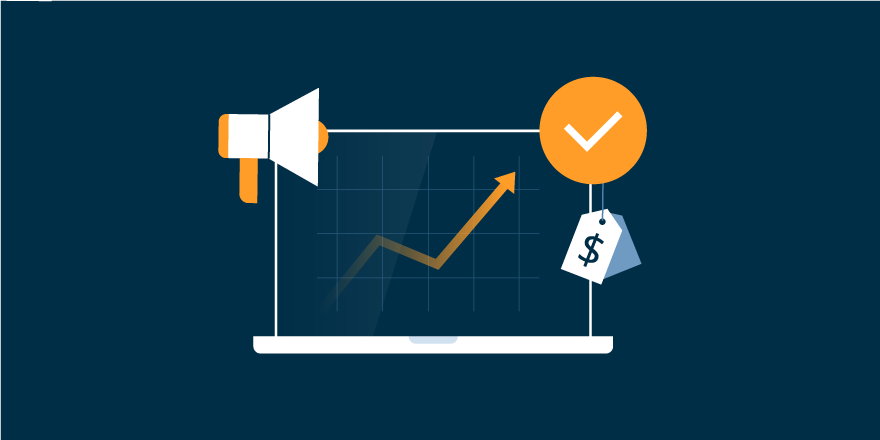A Beginner’s Guide to Performance Marketing: Everything You Need to Know

In 2021, global digital advertising spending reached $455.3 billion, and Statista projects it will soar to $646 billion by 2025. This rapid growth in digital marketing has spurred innovations like social media advertising, affiliate marketing, email marketing, and performance marketing. Among these, performance marketing stands out as a strategic, results-driven approach that benefits businesses and their marketing partners alike.
If you’re keen to explore how performance marketing can help grow your business, this guide will provide everything you need to get started.
A: While you can manage performance marketing in-house, partnering with experienced agencies or affiliate managers can provide expertise and faster results.
Q: What are the most common mistakes to avoid in performance marketing?
A: Common mistakes include partnering with low-quality affiliates, neglecting mobile optimization, and failing to track campaign performance.
Q: How do I target the right audience for my performance marketing campaigns?
A: Use data insights, audience segmentation, and testing to refine your targeting and reach the most relevant users. By implementing the strategies outlined in this guide, your business can harness the full potential of performance marketing and achieve remarkable results.
Table of Contents
- What Is Performance Marketing?
- How Does Performance Marketing Work?
- Benefits of Performance Marketing
- Key Metrics in Performance Marketing
- Types of Performance Marketing
- Tips for Performance Marketing Success
- The Final Word
- FAQs About Performance Marketing
What Is Performance Marketing?
Performance marketing is a form of advertising where businesses pay marketing partners only when specific actions—like a sale, lead, or download—are completed. This results-oriented approach ensures that every marketing dollar delivers measurable outcomes. It combines the strengths of paid advertising and brand marketing, offering a win-win for both merchants and affiliates. While affiliate marketing falls under the umbrella of performance marketing, the latter encompasses a broader range of strategies, including influencer collaborations, email campaigns, and native advertising. In short, performance marketing focuses on achieving scalable results with measurable ROI.How Does Performance Marketing Work?
Performance marketing involves four key players:- Retailers or Merchants: These businesses promote their products or services through affiliate partners. They outline goals, such as increasing sales or acquiring leads, and pay affiliates only when these objectives are met.
- Affiliates or Publishers: Affiliates are marketing partners who promote the retailer’s products via blogs, coupon sites, or social media. They earn commissions based on their performance, such as generating clicks or sales.
- Affiliate Networks and Tracking Platforms: These platforms facilitate collaboration between merchants and affiliates, offering tools to manage campaigns, track performance, and handle payouts.
- Affiliate Managers or Agencies: These professionals act as intermediaries, managing campaigns and ensuring alignment between merchants and affiliates. Brands can choose in-house managers or outsource to agencies for expertise and faster results.
Benefits of Performance Marketing
Performance marketing offers numerous advantages:- Increased Brand Awareness: Affiliates leverage their established audiences to promote your brand, driving more traffic and exposure.
- Measurable ROI: Transparent tracking ensures you can evaluate campaign performance and optimize for better results.
- Lower Risk: Since payments are tied to completed actions, performance marketing minimizes financial risks and maximizes returns.
- Scalability: Performance marketing allows businesses to scale campaigns efficiently by collaborating with multiple partners.
Key Metrics in Performance Marketing
Understanding these metrics is crucial for effective campaign measurement:- Cost Per Acquisition (CPA): The amount paid for each desired action, such as a sale or lead.
- Pay Per Lead (PPL): Payment for generating leads, like form submissions or signups.
- Pay Per Click (PPC): Payment for each ad click, driving traffic to your site.
- Lifetime Value (LTV): An estimate of the total revenue a customer will generate throughout their relationship with your brand.
- Conversion Rate (CR): The percentage of users who complete a desired action after clicking on an ad.
Types of Performance Marketing
Performance marketing encompasses various strategies:- Affiliate Marketing: Affiliates promote your products and earn commissions for successful actions, such as sales or signups.
- Native Advertising: Ads seamlessly blend into the platform’s content, enhancing user engagement. Common payment models include CPM (cost per thousand impressions) and CPC (cost per click).
- Sponsored Content: Brands pay publishers to create dedicated content, such as blog posts or videos, that align with their audience.
- Social Media Marketing: Leveraging platforms like Facebook and Instagram to run targeted ad campaigns and track engagement.
- Paid Search Marketing: Running sponsored ads on search engines, using models like PPC or CPM.
- Search Engine Optimization (SEO): Optimizing content to rank higher organically in search engine results, driving unpaid traffic.
Tips for Performance Marketing Success
- Optimize Your Landing Pages: Ensure your landing pages are user-friendly, visually appealing, and designed to convert visitors.
- A/B Testing: Experiment with different ad creatives, CTAs, and offers to identify what resonates most with your audience.
- Partner with Reputable Affiliates: Collaborate with affiliates who align with your brand values and target audience.
- Track and Analyze Data: Use tracking tools to monitor performance metrics and adjust campaigns accordingly.
- Stay Compliant: Adhere to guidelines set by regulatory bodies like the FTC and GDPR to maintain trust and transparency.
- Invest in Mobile Optimization: With mobile traffic on the rise, ensure your campaigns are mobile-friendly for maximum reach.
- Leverage Influencers: Collaborate with influencers who can authentically promote your brand to their followers.
The Final Word
Performance marketing is a powerful tool for businesses looking to achieve measurable results and scale efficiently. By partnering with affiliates, leveraging data insights, and optimizing campaigns, you can drive significant growth in your e-commerce business. Whether you’re just starting or looking to refine your strategy, performance marketing offers endless opportunities to succeed.FAQs About Performance Marketing
Q: Can I do performance marketing myself, or should I hire outside resources?A: While you can manage performance marketing in-house, partnering with experienced agencies or affiliate managers can provide expertise and faster results.
Q: What are the most common mistakes to avoid in performance marketing?
A: Common mistakes include partnering with low-quality affiliates, neglecting mobile optimization, and failing to track campaign performance.
Q: How do I target the right audience for my performance marketing campaigns?
A: Use data insights, audience segmentation, and testing to refine your targeting and reach the most relevant users. By implementing the strategies outlined in this guide, your business can harness the full potential of performance marketing and achieve remarkable results.



